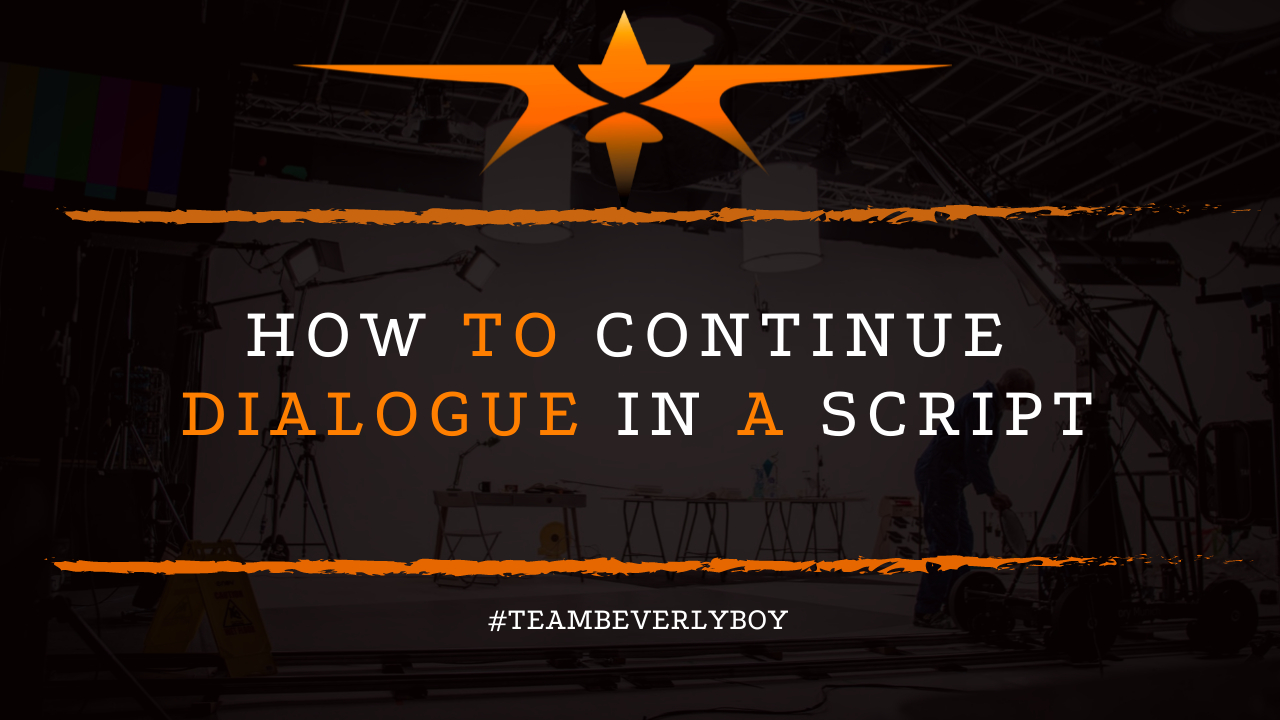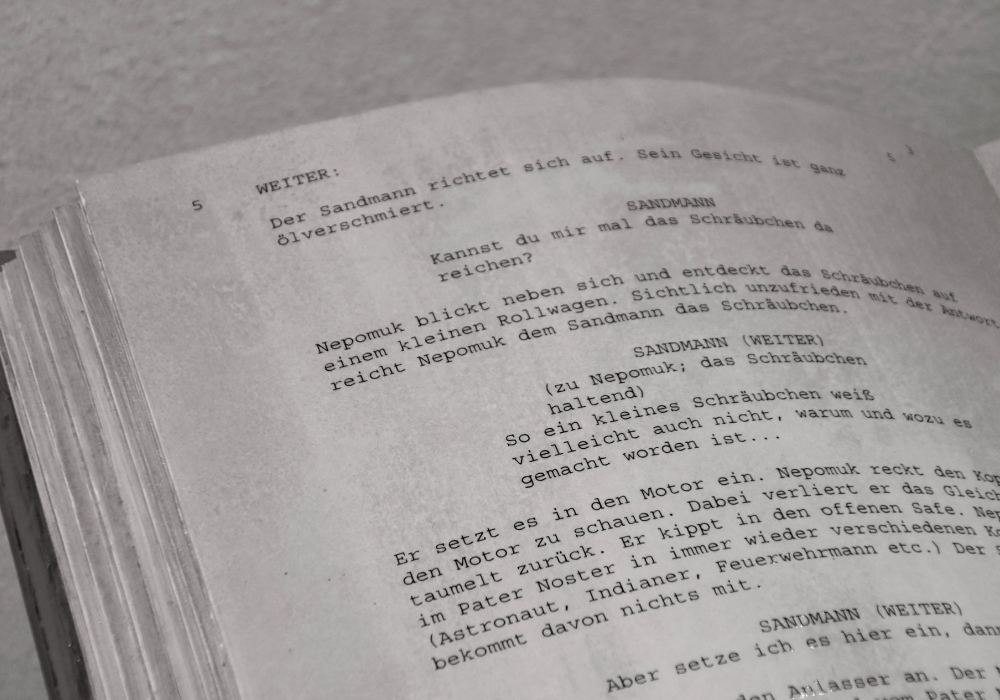
Continue Dialogue in a Script
If you’ve got characters in a scene that are talking with one another for a continuous period of time, you might need to know how to continue dialogue in a script as you transition either to another scene, or as the dialogue extends into another aspect of the story. Learning how to continue dialogue in a script is important for the screenwriter to understand. Particularly from a formatting perspective. But it’s also important for both the cast and crew to recognize as the continued dialogue. Especially if it’s formatting incorrectly, could change the dynamics of the entire scene.

So how do you not only apply the continuation of dialogue within a script. But also how is the dialogue formatted so that cast, and crew, know what to expect?
Writing dialogue for any script can be challenging. Regardless of whether it’s for a short film script or a full length feature.
When nuances like simple punctuation and formatting get in the way. Mastering something like the continuation of dialogue in a script really can be confusing at best.
Quick Tips for Formatting Dialogue in a Script
First, you need to make sure that you’re taking the appropriate steps to format dialogue in your script. Regardless of whether the dialogue is short, long, continuous or not.
To start, begin by structuring your dialogue in a way in which it is very clear that the next words in your script are actually dialogue.
And they cannot be confused with things like sluglines, headings, or other script elements.
Consider the following rules of formatting dialogue in a script:
- Character dialogue should be enclosed within double quotation marks.
- Dialogue tags such as “he said” or “she asked” or “he bemused” or “she screamed” are to remain outside the double quotation marks and, just like in a novel, they are separated by a comma.
- Action line items which take place prior to the dialogue should be placed ahead of the dialogue in a completely separate line/sentence.
- Action line items which take place after the dialogue should be placed after the dialogue in a completely separate line/sentence.
- To continue dialogue after an action has interrupted the dialogue, particularly if the action interrupts the dialogue mid-sentence. You will follow with the second sentence fragment using a lowercase letter to start. For example, it might look like this: “Whenever you’re in trouble,” she whispered, “just call my name.”
When to Use Cont’d or Continued in a Script
You might be wondering when it’s okay to include the term “continued” in a script, particularly as it may apply to learning how to continue dialogue in a script.
The word “continued” should be used to signify the ongoing dialogue of a character when it extends beyond a single page of script.
Such that the dialogue spans from the bottom of one page and begins again at the top of the next.
Formatting
Screenwriting software is generally going to format this for you such that the dialogue will end on one page with (MORE) and on the next page.
You’ll see the character’s name followed by (CONT’D). While it’s okay to adjust this, it’s really not necessary and, since consistency is key in formatting, it’s best that you leave it alone.
Continuing Dialogue Across Multiple Paragraphs

When there’s a single speaker but the dialogue spans multiple paragraphs you can generally open with quotation marks and begin your dialogue.
At the end of a paragraph, there is no need to use quotation marks if you will have another paragraph of dialogue immediately following.
You can end the first paragraph with standard terminal punctuation such as a period, question mark, or an exclamation point depending on the style of sentence preceding the punctuation.
Quotes
Use quotation marks at the start of the opening sentence in the next paragraph. When the last sentence of the dialogue has been established, it should have its ending punctuation.
As well as the final set of quotation marks to close the dialogue out. No matter how many paragraphs you have, the preceding paragraphs do not contain ending quotation marks.
But they all have beginning quotation marks and the final paragraph ends with a quotation mark too.
How to Continue Dialogue in a Script as a Pre-Lap
The term “pre-lap” is used to describe dialogue that the audience will hear from a previous scene as the next scene’s visuals begin to transition onto the screen.
Learning how to continue dialogue in a script that is essentially playing from the prior scene as the new visuals begin for the upcoming scene requires some basic adjustments to the slugline.
To help the reader know what the audience should be hearing in relation to the prior scene as the next scene begins, use the term “Pre Lap” next to the character’s name.
Your script will look something like this:
DREW (PRE-LAP)
I couldn’t find my wallet when I left the house, but I should still be able to get in.
INT. MOVIE THEATER – DAY
Drew turns to his partner to pay for popcorn.
DREW (CONT’D)
Thanks a lot, I’ll pay you back later.
The Takeaway
As you can see, learning how to continue dialogue in a script can take on a variety of potential circumstances. Depending on exactly how the dialogue is being delivered.
And the continuation whether it’s into another scene, from a prior scene, or just onto another page of the script.
Formatting dialogue is essential to allow the reader maximum understanding of what’s taking place within the script and who’s speaking.
Keeping it as simple, fluent, and consistent as possible is key.


